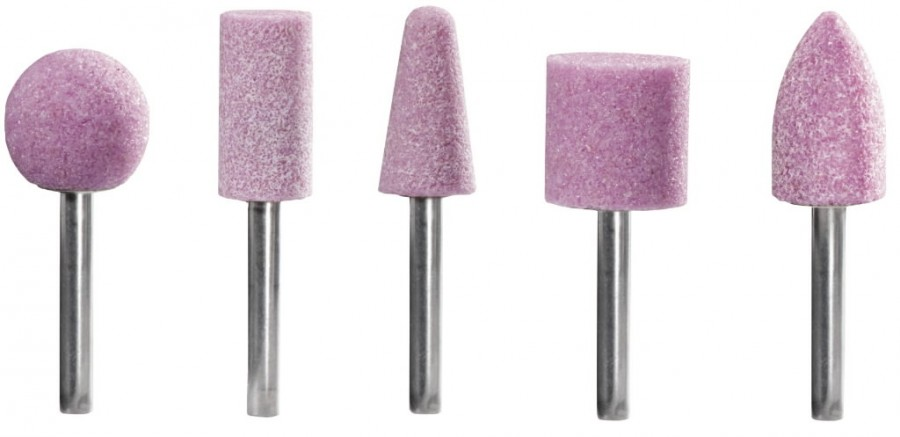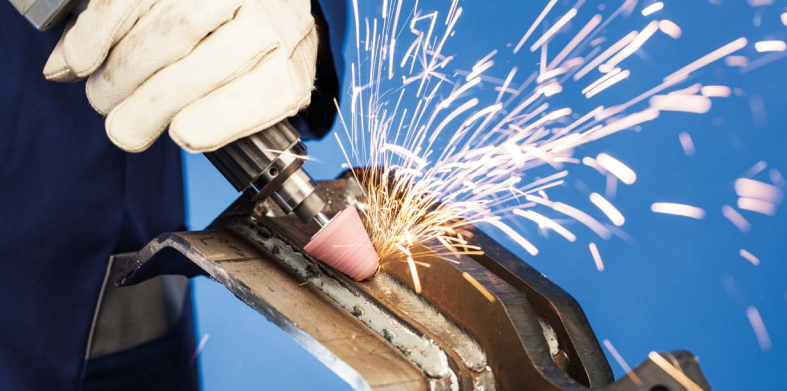Mounted points, also known as grinding points or abrasive points, are essential tools in various industrial and metalworking applications. They are small, versatile, and abrasive tools that can be mounted on a variety of machines, such as die grinders, straight grinders, and bench grinders. Selecting the right mounted point for your specific application is crucial to achieve efficient and high-quality results. In this article, we will discuss the factors to consider when choosing a mounted point and provide guidance on selecting the most suitable one for your needs.
Understanding Mounted Points
Mounted points consist of abrasive grains, binders, and a shank. The abrasive grains can be made from various materials, including aluminum oxide, silicon carbide, and ceramic. These abrasive materials are embedded in a binder that holds them together and provides stability during grinding or finishing operations. The shank is typically made of steel and is used to attach the mounted point to a grinding machine.
Mounted points come in various shapes, sizes, and materials, making them suitable for a wide range of applications. They are commonly used for tasks such as deburring, shaping, grinding, and finishing metals, ceramics, plastics, and composites. Choosing the right mounted point is essential for achieving the desired surface finish and maintaining productivity.
Factors to Consider When Selecting Mounted Points
Selecting the appropriate mounted point for your application involves considering several factors. Let’s explore these key factors in detail:
- Material to be Worked On
The type of material you are working on plays a significant role in determining the mounted point’s suitability. Different materials have varying hardness and abrasiveness, which necessitates using the right abrasive material and grit size. For example, aluminum oxide mounted points work well on ferrous metals, while silicon carbide is better suited for non-ferrous metals and non-metallic materials.
- Application Type
Consider the specific application you have in mind. Are you deburring, shaping, grinding, or finishing the material? Different applications may require mounted points with distinct shapes and abrasive characteristics. For instance, cylindrical and conical mounted points are commonly used for deburring and shaping, while spherical or bullet-shaped points are ideal for intricate or concave surfaces.
- Grinding Speed
The speed of your grinding machine is a critical factor to consider. Different mounted points are designed to work optimally at various speeds. Using a mounted point at the wrong speed can lead to overheating and reduced tool life. Always check the mounted point manufacturer‘s recommendations for the maximum permissible speed of the mounted point and ensure it matches your machine’s capabilities.
- Grit Size
Grit size refers to the size of the abrasive particles on the mounted point’s surface. It determines the aggressiveness of the tool. Smaller grit sizes are more aggressive and remove material quickly but may leave a rougher surface finish. Larger grit sizes provide a finer finish but remove material more slowly. The choice of grit size depends on the desired finish and the material being worked on.
- Shape and Size
The shape and size of the mounted point are essential considerations. The shape should match the contours of the workpiece, while the size should be appropriate for the task at hand. A smaller mounted point may be more maneuverable for intricate work, while a larger one might be more efficient for bulk material removal.
- Hardness of the Material
Consider the hardness of the material you are working on, as it can impact the wear and longevity of the mounted point. Softer materials can cause the abrasive grains to clog the mounted point, reducing its effectiveness. Conversely, harder materials can wear down the mounted point more quickly. It’s crucial to select a mounted point that strikes the right balance for the material’s hardness.
- Coolant and Lubrication
In some applications, using coolant or lubrication is necessary to maintain the performance and extend the life of the mounted point. The choice of coolant or lubricant depends on the material being worked on and the specific grinding conditions. Always follow the manufacturer’s recommendations for using coolants and lubricants to prevent overheating and improve the tool’s efficiency.
- Safety Considerations
Safety should be a top priority when selecting a mounted point. Ensure that the mounted point and your grinding machine are compatible in terms of RPM and torque. Furthermore, use personal protective equipment, such as safety glasses and dust masks, to protect yourself from potential hazards during the grinding process.
Steps to Select the Right Mounted Point
Now that we have discussed the key factors to consider, let’s outline the steps to help you select the right mounted point for your application:
- Identify Your Material: Determine the type and hardness of the material you will be working on. This will guide your choice of abrasive material and grit size.
- Define Your Application: Specify the type of work you need to perform. Whether it’s deburring, grinding, or finishing, understanding your application will help you select the appropriate mounted point shape and size.
- Determine the Grinding Speed: Check your grinding machine’s speed capabilities and compare them to the manufacturer’s recommendations for the mounted point. Ensure they are compatible.
- Choose the Grit Size: Based on the desired finish and material hardness, select the appropriate grit size for your mounted point.
- Select the Shape and Size: Choose a mounted point with a shape and sizethat best matches the contours of your workpiece and the requirements of your application.
- Consider Coolant and Lubrication:Assess whether coolant or lubrication is necessary for your specific application and follow the manufacturer’s guidelines.
- Prioritize Safety:Ensure that you are using the mounted point in a safe and controlled manner. Use proper safety equipment and follow all safety protocols.
- Consult with Experts:If you have any doubts or uncertainties, don’t hesitate to consult with experts in the field. They can provide valuable insights and recommendations for selecting the right mounted point.
Conclusion
Selecting the right mounted point is crucial for achieving efficient and high-quality results in your grinding and finishing applications. Consider factors such as material type, application, grinding speed, grit size, shape and size, material hardness, coolant and lubrication requirements, and safety. By following the steps outlined in this article and consulting with experts when needed, you can ensure that you choose the most suitable mounted point for your specific application. Proper selection and usage of mounted points not only enhance productivity but also contribute to the longevity of your tools and the quality of your finished products.


